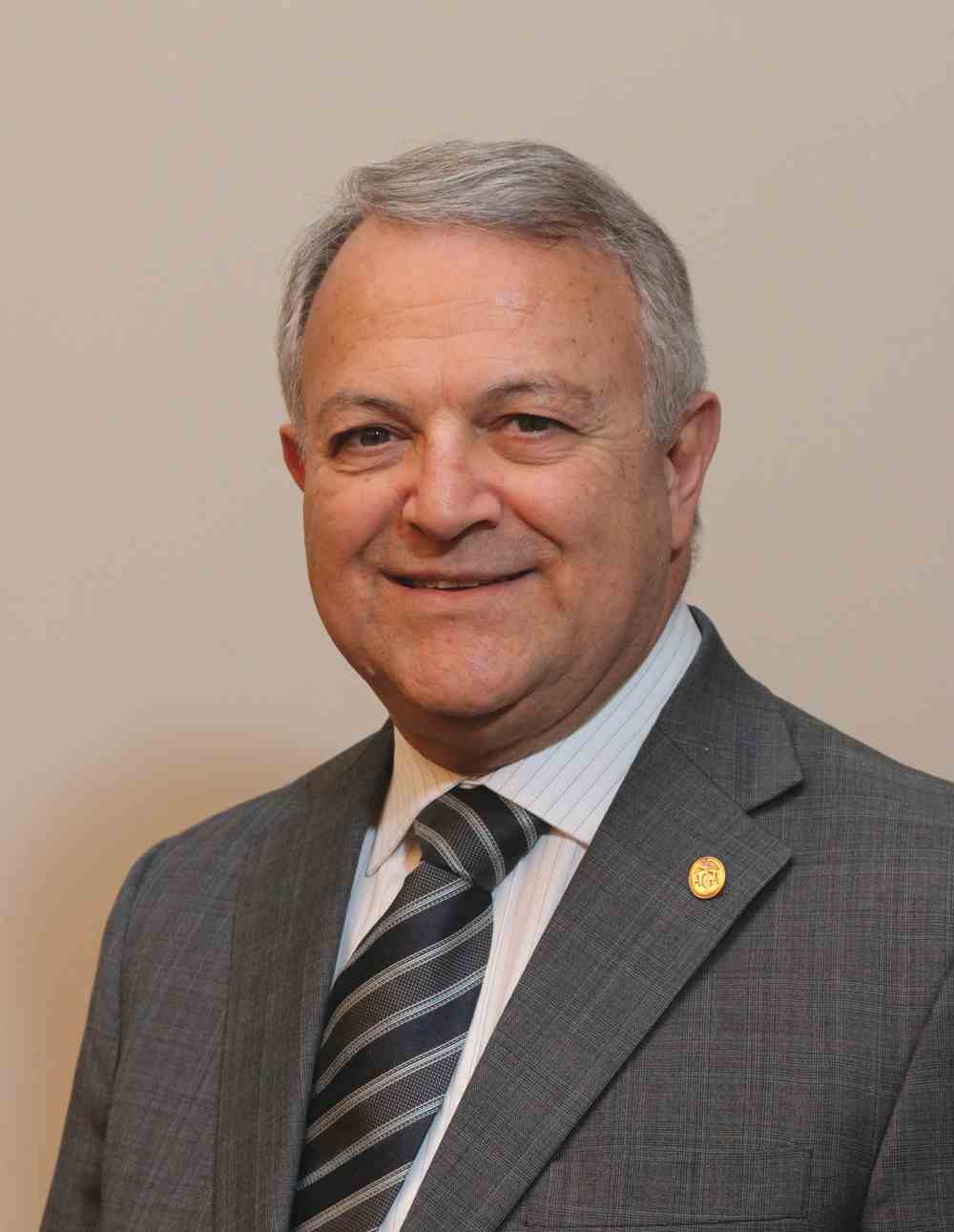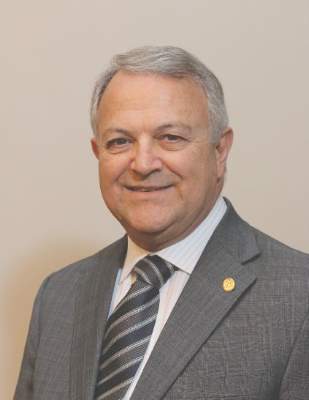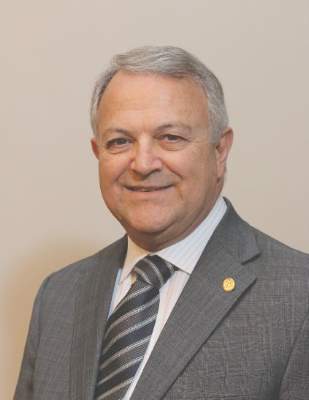User login
Relamorelin for diabetic gastroparesis: Trial results
Gastroparesis is defined as delayed gastric emptying with associated symptoms in the absence of mechanical obstruction. The cardinal symptoms are upper abdominal pain, postprandial fullness, bloating, early satiety, nausea, and, with more severe disease, vomiting. Weight loss, malnutrition, dehydration, electrolyte imbalance, bezoar formation, and aspiration pneumonia may occur in advanced cases. Unfortunately, there are few approved or efficacious treatment options for diabetic gastroparesis. The 5-HT4 receptor agonist, cisapride, has been withdrawn from the prescription markets in most countries.
The study aim was to evaluate the efficacy of relamorelin on disease symptoms and gastric emptying in moderate to severe diabetic gastroparesis. In a 12-week, double-blind, placebo-controlled, parallel-group, randomized, controlled trial, with a 2-week, single-blind placebo run-in, patients were randomized to 10 microg b.i.d., 30 microg b.i.d., 100 microg b.i.d., or placebo b.i.d. Patients completed a daily e-diary of symptoms (Diabetic Gastroparesis Symptom Severity Diary [DGSSD]: nausea, abdominal pain, postprandial fullness, and bloating on a 0–10 scale) and vomiting episodes, which were summarized by treatment week. The primary endpoint was a change from baseline in vomiting frequency; a key secondary endpoint was change from baseline in a four-symptom composite of DGSSD symptoms.
A longitudinal analysis over the 12-week trial showed there were reductions in nausea, postprandial fullness, abdominal pain, and bloating individually and as a composite score. Relamorelin accelerated gastric emptying T1/2 at all three doses compared with placebo. However, there were no effects on vomiting frequency, which showed a high placebo response. More hyperglycemia events and diarrhea events were observed with relamorelin treatment compared with placebo. The diarrhea reflects the previously demonstrated stimulation of colonic transit and motility and reduction of symptoms of constipation in patients with chronic constipation. The hyperglycemia likely resulted from accelerated gastric emptying rather than potential inhibition of insulin production, which has been reported with high levels of ghrelin in animal studies or with high levels of ghrelin associated with starvation.
Thus, relamorelin demonstrated substantially improved core symptoms of diabetic gastroparesis, was generally safe and well tolerated, and should be further assessed in pivotal phase 3 trials. The results in this trial suggest that there is no dose-response relationship between the three doses of relamorelin tested and that future trials of relamorelin might not need to include the 100-microg b.i.d. dose. Importantly, this study also suggests the importance to prospectively manage the hyperglycemia in future trials.
Dr. Camilleri is a faculty member in the department of gastroenterology and hepatology at the Mayo Clinic in Rochester, Minn. His comments were made during the AGA Institute Presidential Plenary at the Annual Digestive Disease Week.
Gastroparesis is defined as delayed gastric emptying with associated symptoms in the absence of mechanical obstruction. The cardinal symptoms are upper abdominal pain, postprandial fullness, bloating, early satiety, nausea, and, with more severe disease, vomiting. Weight loss, malnutrition, dehydration, electrolyte imbalance, bezoar formation, and aspiration pneumonia may occur in advanced cases. Unfortunately, there are few approved or efficacious treatment options for diabetic gastroparesis. The 5-HT4 receptor agonist, cisapride, has been withdrawn from the prescription markets in most countries.
The study aim was to evaluate the efficacy of relamorelin on disease symptoms and gastric emptying in moderate to severe diabetic gastroparesis. In a 12-week, double-blind, placebo-controlled, parallel-group, randomized, controlled trial, with a 2-week, single-blind placebo run-in, patients were randomized to 10 microg b.i.d., 30 microg b.i.d., 100 microg b.i.d., or placebo b.i.d. Patients completed a daily e-diary of symptoms (Diabetic Gastroparesis Symptom Severity Diary [DGSSD]: nausea, abdominal pain, postprandial fullness, and bloating on a 0–10 scale) and vomiting episodes, which were summarized by treatment week. The primary endpoint was a change from baseline in vomiting frequency; a key secondary endpoint was change from baseline in a four-symptom composite of DGSSD symptoms.
A longitudinal analysis over the 12-week trial showed there were reductions in nausea, postprandial fullness, abdominal pain, and bloating individually and as a composite score. Relamorelin accelerated gastric emptying T1/2 at all three doses compared with placebo. However, there were no effects on vomiting frequency, which showed a high placebo response. More hyperglycemia events and diarrhea events were observed with relamorelin treatment compared with placebo. The diarrhea reflects the previously demonstrated stimulation of colonic transit and motility and reduction of symptoms of constipation in patients with chronic constipation. The hyperglycemia likely resulted from accelerated gastric emptying rather than potential inhibition of insulin production, which has been reported with high levels of ghrelin in animal studies or with high levels of ghrelin associated with starvation.
Thus, relamorelin demonstrated substantially improved core symptoms of diabetic gastroparesis, was generally safe and well tolerated, and should be further assessed in pivotal phase 3 trials. The results in this trial suggest that there is no dose-response relationship between the three doses of relamorelin tested and that future trials of relamorelin might not need to include the 100-microg b.i.d. dose. Importantly, this study also suggests the importance to prospectively manage the hyperglycemia in future trials.
Dr. Camilleri is a faculty member in the department of gastroenterology and hepatology at the Mayo Clinic in Rochester, Minn. His comments were made during the AGA Institute Presidential Plenary at the Annual Digestive Disease Week.
Gastroparesis is defined as delayed gastric emptying with associated symptoms in the absence of mechanical obstruction. The cardinal symptoms are upper abdominal pain, postprandial fullness, bloating, early satiety, nausea, and, with more severe disease, vomiting. Weight loss, malnutrition, dehydration, electrolyte imbalance, bezoar formation, and aspiration pneumonia may occur in advanced cases. Unfortunately, there are few approved or efficacious treatment options for diabetic gastroparesis. The 5-HT4 receptor agonist, cisapride, has been withdrawn from the prescription markets in most countries.
The study aim was to evaluate the efficacy of relamorelin on disease symptoms and gastric emptying in moderate to severe diabetic gastroparesis. In a 12-week, double-blind, placebo-controlled, parallel-group, randomized, controlled trial, with a 2-week, single-blind placebo run-in, patients were randomized to 10 microg b.i.d., 30 microg b.i.d., 100 microg b.i.d., or placebo b.i.d. Patients completed a daily e-diary of symptoms (Diabetic Gastroparesis Symptom Severity Diary [DGSSD]: nausea, abdominal pain, postprandial fullness, and bloating on a 0–10 scale) and vomiting episodes, which were summarized by treatment week. The primary endpoint was a change from baseline in vomiting frequency; a key secondary endpoint was change from baseline in a four-symptom composite of DGSSD symptoms.
A longitudinal analysis over the 12-week trial showed there were reductions in nausea, postprandial fullness, abdominal pain, and bloating individually and as a composite score. Relamorelin accelerated gastric emptying T1/2 at all three doses compared with placebo. However, there were no effects on vomiting frequency, which showed a high placebo response. More hyperglycemia events and diarrhea events were observed with relamorelin treatment compared with placebo. The diarrhea reflects the previously demonstrated stimulation of colonic transit and motility and reduction of symptoms of constipation in patients with chronic constipation. The hyperglycemia likely resulted from accelerated gastric emptying rather than potential inhibition of insulin production, which has been reported with high levels of ghrelin in animal studies or with high levels of ghrelin associated with starvation.
Thus, relamorelin demonstrated substantially improved core symptoms of diabetic gastroparesis, was generally safe and well tolerated, and should be further assessed in pivotal phase 3 trials. The results in this trial suggest that there is no dose-response relationship between the three doses of relamorelin tested and that future trials of relamorelin might not need to include the 100-microg b.i.d. dose. Importantly, this study also suggests the importance to prospectively manage the hyperglycemia in future trials.
Dr. Camilleri is a faculty member in the department of gastroenterology and hepatology at the Mayo Clinic in Rochester, Minn. His comments were made during the AGA Institute Presidential Plenary at the Annual Digestive Disease Week.
AGA Presidential Address
As Oliver Wendell Holmes stated “The great thing in this world is not so much where we stand, as in what direction we are moving.” Where is AGA moving? AGA represents highest values in the field of gastroenterology and hepatology, and a focus on the care of patients. We need to demonstrate value, maintain certification, discover new treatments, and improve patient care.
The era of reimbursement based on value, quality care is here: AGA is the leading GI society helping you provide quality care and demonstrating to payors that you’re doing so. Medicare is in the midst of shifting to a value and quality-driven physician reimbursement system. AGA is here to help you successfully make the transition. You must learn about the new system and start preparations — decisions made this year will impact your payment in the future.
An important milestone in the transition to the new system was the recent release of proposed rules related to MACRA (Medicare Access and CHIP Reauthorization Act of 2015), which replaces the flawed Sustainable Growth Rate formula. CHIP is the Children’s Health Insurance Program. Under MACRA, physicians will have a choice — to be paid via the Merit-based Incentive Payment System (MIPS) or Alternate Payment Models. Most GIs will participate in MIPS. The most important thing you can do now is report on quality. AGA has quality measures and our Digestive Health Recognition Program is a qualified clinical data registry.
AGA must lead our profession to increase the value of the care we provide. High value, cost conscious care refers to care that aims to assess the benefits, harms, and costs of interventions and, consequently, to provide care that adds value. Guidance to enhance value of care based on cognitive skills and appropriate use of biomarkers and imaging, and Clinical Practice Updates are complementary to AGA Guidelines.
Gastroenterologists must maintain certification in a system we don’t support. Maintenance of certification is a major issue in medicine. AGA is pushing for change, favoring continuous professional development for gastroenterologists who self-categorize their practice expertise, and participate in assessments having a built‐in remediation experience with access to resources during the testing. Having developed consensus principles authored by AGA, AASLD, ACG, ASGE, ANMS, and NASPGHAN, we have achieved a stop to the 10-year high stakes exam. We have developed an alliance with other internal medicine societies to attempt to co-create MOC of the future.
One area that is a constant in medicine is the need for research. AGA is committed to research and supporting young investigators so that the future is bright for our patients. Every year our foundation gives $2.5 million in research grants and we continue to advocate for increased NIH funding.
Patients need us to better understand digestive disease and discover new treatments. We have extensive patient education tools on the AGA website. AGA supports device and drug makers working to bring new treatments to patients, with dedicated centers: Center for GI Technology, Center for Diagnostics and Therapeutics and the Center for the Microbiome, which recently received a prestigious grant from the NIH to support microbiome research.
Patients also want evidence-based care and want to participate in choices. We are developing new patient education materials for use AT THE POINT OF CARE, and for inclusion in EHRs to provide automated qualified clinical data registry (QCDR) reporting by gastroenterologists. At present, there are still challenges of interoperability in the electronic environment.
Obesity is a chronic disease concomitant with many GI diseases and reflects an opportunity for obesity management by gastroenterologists through a forthcoming white paper, entitled Practice Guide on Obesity and Weight Management Education, and Resources.
Finally, we recognized Dr. Martin Brotman for innumerable contributions over almost 3 decades as a leader of the AGA, and Dr. Richard Boland as the Julius Friedenwald Medal awardee.
As Oliver Wendell Holmes stated “The great thing in this world is not so much where we stand, as in what direction we are moving.” Where is AGA moving? AGA represents highest values in the field of gastroenterology and hepatology, and a focus on the care of patients. We need to demonstrate value, maintain certification, discover new treatments, and improve patient care.
The era of reimbursement based on value, quality care is here: AGA is the leading GI society helping you provide quality care and demonstrating to payors that you’re doing so. Medicare is in the midst of shifting to a value and quality-driven physician reimbursement system. AGA is here to help you successfully make the transition. You must learn about the new system and start preparations — decisions made this year will impact your payment in the future.
An important milestone in the transition to the new system was the recent release of proposed rules related to MACRA (Medicare Access and CHIP Reauthorization Act of 2015), which replaces the flawed Sustainable Growth Rate formula. CHIP is the Children’s Health Insurance Program. Under MACRA, physicians will have a choice — to be paid via the Merit-based Incentive Payment System (MIPS) or Alternate Payment Models. Most GIs will participate in MIPS. The most important thing you can do now is report on quality. AGA has quality measures and our Digestive Health Recognition Program is a qualified clinical data registry.
AGA must lead our profession to increase the value of the care we provide. High value, cost conscious care refers to care that aims to assess the benefits, harms, and costs of interventions and, consequently, to provide care that adds value. Guidance to enhance value of care based on cognitive skills and appropriate use of biomarkers and imaging, and Clinical Practice Updates are complementary to AGA Guidelines.
Gastroenterologists must maintain certification in a system we don’t support. Maintenance of certification is a major issue in medicine. AGA is pushing for change, favoring continuous professional development for gastroenterologists who self-categorize their practice expertise, and participate in assessments having a built‐in remediation experience with access to resources during the testing. Having developed consensus principles authored by AGA, AASLD, ACG, ASGE, ANMS, and NASPGHAN, we have achieved a stop to the 10-year high stakes exam. We have developed an alliance with other internal medicine societies to attempt to co-create MOC of the future.
One area that is a constant in medicine is the need for research. AGA is committed to research and supporting young investigators so that the future is bright for our patients. Every year our foundation gives $2.5 million in research grants and we continue to advocate for increased NIH funding.
Patients need us to better understand digestive disease and discover new treatments. We have extensive patient education tools on the AGA website. AGA supports device and drug makers working to bring new treatments to patients, with dedicated centers: Center for GI Technology, Center for Diagnostics and Therapeutics and the Center for the Microbiome, which recently received a prestigious grant from the NIH to support microbiome research.
Patients also want evidence-based care and want to participate in choices. We are developing new patient education materials for use AT THE POINT OF CARE, and for inclusion in EHRs to provide automated qualified clinical data registry (QCDR) reporting by gastroenterologists. At present, there are still challenges of interoperability in the electronic environment.
Obesity is a chronic disease concomitant with many GI diseases and reflects an opportunity for obesity management by gastroenterologists through a forthcoming white paper, entitled Practice Guide on Obesity and Weight Management Education, and Resources.
Finally, we recognized Dr. Martin Brotman for innumerable contributions over almost 3 decades as a leader of the AGA, and Dr. Richard Boland as the Julius Friedenwald Medal awardee.
As Oliver Wendell Holmes stated “The great thing in this world is not so much where we stand, as in what direction we are moving.” Where is AGA moving? AGA represents highest values in the field of gastroenterology and hepatology, and a focus on the care of patients. We need to demonstrate value, maintain certification, discover new treatments, and improve patient care.
The era of reimbursement based on value, quality care is here: AGA is the leading GI society helping you provide quality care and demonstrating to payors that you’re doing so. Medicare is in the midst of shifting to a value and quality-driven physician reimbursement system. AGA is here to help you successfully make the transition. You must learn about the new system and start preparations — decisions made this year will impact your payment in the future.
An important milestone in the transition to the new system was the recent release of proposed rules related to MACRA (Medicare Access and CHIP Reauthorization Act of 2015), which replaces the flawed Sustainable Growth Rate formula. CHIP is the Children’s Health Insurance Program. Under MACRA, physicians will have a choice — to be paid via the Merit-based Incentive Payment System (MIPS) or Alternate Payment Models. Most GIs will participate in MIPS. The most important thing you can do now is report on quality. AGA has quality measures and our Digestive Health Recognition Program is a qualified clinical data registry.
AGA must lead our profession to increase the value of the care we provide. High value, cost conscious care refers to care that aims to assess the benefits, harms, and costs of interventions and, consequently, to provide care that adds value. Guidance to enhance value of care based on cognitive skills and appropriate use of biomarkers and imaging, and Clinical Practice Updates are complementary to AGA Guidelines.
Gastroenterologists must maintain certification in a system we don’t support. Maintenance of certification is a major issue in medicine. AGA is pushing for change, favoring continuous professional development for gastroenterologists who self-categorize their practice expertise, and participate in assessments having a built‐in remediation experience with access to resources during the testing. Having developed consensus principles authored by AGA, AASLD, ACG, ASGE, ANMS, and NASPGHAN, we have achieved a stop to the 10-year high stakes exam. We have developed an alliance with other internal medicine societies to attempt to co-create MOC of the future.
One area that is a constant in medicine is the need for research. AGA is committed to research and supporting young investigators so that the future is bright for our patients. Every year our foundation gives $2.5 million in research grants and we continue to advocate for increased NIH funding.
Patients need us to better understand digestive disease and discover new treatments. We have extensive patient education tools on the AGA website. AGA supports device and drug makers working to bring new treatments to patients, with dedicated centers: Center for GI Technology, Center for Diagnostics and Therapeutics and the Center for the Microbiome, which recently received a prestigious grant from the NIH to support microbiome research.
Patients also want evidence-based care and want to participate in choices. We are developing new patient education materials for use AT THE POINT OF CARE, and for inclusion in EHRs to provide automated qualified clinical data registry (QCDR) reporting by gastroenterologists. At present, there are still challenges of interoperability in the electronic environment.
Obesity is a chronic disease concomitant with many GI diseases and reflects an opportunity for obesity management by gastroenterologists through a forthcoming white paper, entitled Practice Guide on Obesity and Weight Management Education, and Resources.
Finally, we recognized Dr. Martin Brotman for innumerable contributions over almost 3 decades as a leader of the AGA, and Dr. Richard Boland as the Julius Friedenwald Medal awardee.
AGA 2016 Presidential Address
As Oliver Wendell Holmes stated “The great thing in this world is not so much where we stand, as in what direction we are moving.” Where is AGA moving? AGA represents the highest values in the field of gastroenterology and hepatology, and a focus on the care of patients. We need to demonstrate value, maintain certification, discover new treatments, and improve patient care.
The era of reimbursement based on value, quality care is here: AGA is the leading GI society helping you provide quality care and demonstrating to payors that you’re doing so. Medicare is in the midst of shifting to a value and quality-driven physician reimbursement system. AGA is here to help you successfully make the transition. You must learn about the new system and start preparations – decisions made this year will impact your payment in the future.
An important milestone in the transition to the new system was the recent release of proposed rules related to MACRA (Medicare Access and CHIP Reauthorization Act of 2015), which replaces the flawed Sustainable Growth Rate formula. CHIP is the Children’s Health Insurance Program. Under MACRA, physicians will have a choice – to be paid via the Merit-Based Incentive Payment System (MIPS) or Alternate Payment Models. Most GIs will participate in MIPS. The most important thing you can do now is report on quality. AGA has quality measures and our Digestive Health Recognition Program is a qualified clinical data registry.
AGA must lead our profession to increase the value of the care we provide. High-value, cost-conscious care refers to care that aims to assess the benefits, harms, and costs of interventions and, consequently, to provide care that adds value. Guidance to enhance value of care based on cognitive skills and appropriate use of biomarkers and imaging, and Clinical Practice Updates are complementary to AGA Guidelines.
Gastroenterologists must maintain certification in a system we don’t support. Maintenance of certification is a major issue in medicine. AGA is pushing for change, favoring continuous professional development for gastroenterologists who self-categorize their practice expertise, and participate in assessments having a built‐in remediation experience with access to resources during the testing. Having developed consensus principles authored by AGA, AASLD, ACG, ASGE, ANMS, and NASPGHAN, we have achieved a stop to the 10-year high stakes exam. We have developed an alliance with other internal medicine societies to attempt to co-create MOC of the future.
One area that is a constant in medicine is the need for research. AGA is committed to research and supporting young investigators so that the future is bright for our patients. Every year our foundation gives $2.5 million in research grants and we continue to advocate for increased NIH funding.
Patients need us to better understand digestive disease and discover new treatments. We have extensive patient education tools on the AGA website. AGA supports device and drug makers working to bring new treatments to patients, with dedicated centers: Center for GI Technology, Center for Diagnostics and Therapeutics, and the Center for the Microbiome, which recently received a prestigious grant from the NIH to support microbiome research.
Patients also want evidence-based care and want to participate in choices. We are developing new patient education materials for use AT THE POINT OF CARE, and for inclusion in EHRs to provide automated qualified clinical data registry (QCDR) reporting by gastroenterologists. At present, there are still challenges of interoperability in the electronic environment.
Obesity is a chronic disease concomitant with many GI diseases and reflects an opportunity for obesity management by gastroenterologists through a forthcoming white paper, entitled Practice Guide on Obesity and Weight Management Education, and Resources.
Finally, we recognized Martin Brotman, MD, AGAF, for innumerable contributions over almost 3 decades as a leader of the AGA, and Richard Boland, MD, AGAF, as the Julius Friedenwald Medal awardee.
Dr. Camilleri is the Atherton and Winifred W. Bean Professor and professor of medicine, pharmacology, and physiology, Mayo Clinic College of Medicine Consultant, division of Gastroenterology and Hepatology, Mayo Clinic, Rochester, Minn.
As Oliver Wendell Holmes stated “The great thing in this world is not so much where we stand, as in what direction we are moving.” Where is AGA moving? AGA represents the highest values in the field of gastroenterology and hepatology, and a focus on the care of patients. We need to demonstrate value, maintain certification, discover new treatments, and improve patient care.
The era of reimbursement based on value, quality care is here: AGA is the leading GI society helping you provide quality care and demonstrating to payors that you’re doing so. Medicare is in the midst of shifting to a value and quality-driven physician reimbursement system. AGA is here to help you successfully make the transition. You must learn about the new system and start preparations – decisions made this year will impact your payment in the future.
An important milestone in the transition to the new system was the recent release of proposed rules related to MACRA (Medicare Access and CHIP Reauthorization Act of 2015), which replaces the flawed Sustainable Growth Rate formula. CHIP is the Children’s Health Insurance Program. Under MACRA, physicians will have a choice – to be paid via the Merit-Based Incentive Payment System (MIPS) or Alternate Payment Models. Most GIs will participate in MIPS. The most important thing you can do now is report on quality. AGA has quality measures and our Digestive Health Recognition Program is a qualified clinical data registry.
AGA must lead our profession to increase the value of the care we provide. High-value, cost-conscious care refers to care that aims to assess the benefits, harms, and costs of interventions and, consequently, to provide care that adds value. Guidance to enhance value of care based on cognitive skills and appropriate use of biomarkers and imaging, and Clinical Practice Updates are complementary to AGA Guidelines.
Gastroenterologists must maintain certification in a system we don’t support. Maintenance of certification is a major issue in medicine. AGA is pushing for change, favoring continuous professional development for gastroenterologists who self-categorize their practice expertise, and participate in assessments having a built‐in remediation experience with access to resources during the testing. Having developed consensus principles authored by AGA, AASLD, ACG, ASGE, ANMS, and NASPGHAN, we have achieved a stop to the 10-year high stakes exam. We have developed an alliance with other internal medicine societies to attempt to co-create MOC of the future.
One area that is a constant in medicine is the need for research. AGA is committed to research and supporting young investigators so that the future is bright for our patients. Every year our foundation gives $2.5 million in research grants and we continue to advocate for increased NIH funding.
Patients need us to better understand digestive disease and discover new treatments. We have extensive patient education tools on the AGA website. AGA supports device and drug makers working to bring new treatments to patients, with dedicated centers: Center for GI Technology, Center for Diagnostics and Therapeutics, and the Center for the Microbiome, which recently received a prestigious grant from the NIH to support microbiome research.
Patients also want evidence-based care and want to participate in choices. We are developing new patient education materials for use AT THE POINT OF CARE, and for inclusion in EHRs to provide automated qualified clinical data registry (QCDR) reporting by gastroenterologists. At present, there are still challenges of interoperability in the electronic environment.
Obesity is a chronic disease concomitant with many GI diseases and reflects an opportunity for obesity management by gastroenterologists through a forthcoming white paper, entitled Practice Guide on Obesity and Weight Management Education, and Resources.
Finally, we recognized Martin Brotman, MD, AGAF, for innumerable contributions over almost 3 decades as a leader of the AGA, and Richard Boland, MD, AGAF, as the Julius Friedenwald Medal awardee.
Dr. Camilleri is the Atherton and Winifred W. Bean Professor and professor of medicine, pharmacology, and physiology, Mayo Clinic College of Medicine Consultant, division of Gastroenterology and Hepatology, Mayo Clinic, Rochester, Minn.
As Oliver Wendell Holmes stated “The great thing in this world is not so much where we stand, as in what direction we are moving.” Where is AGA moving? AGA represents the highest values in the field of gastroenterology and hepatology, and a focus on the care of patients. We need to demonstrate value, maintain certification, discover new treatments, and improve patient care.
The era of reimbursement based on value, quality care is here: AGA is the leading GI society helping you provide quality care and demonstrating to payors that you’re doing so. Medicare is in the midst of shifting to a value and quality-driven physician reimbursement system. AGA is here to help you successfully make the transition. You must learn about the new system and start preparations – decisions made this year will impact your payment in the future.
An important milestone in the transition to the new system was the recent release of proposed rules related to MACRA (Medicare Access and CHIP Reauthorization Act of 2015), which replaces the flawed Sustainable Growth Rate formula. CHIP is the Children’s Health Insurance Program. Under MACRA, physicians will have a choice – to be paid via the Merit-Based Incentive Payment System (MIPS) or Alternate Payment Models. Most GIs will participate in MIPS. The most important thing you can do now is report on quality. AGA has quality measures and our Digestive Health Recognition Program is a qualified clinical data registry.
AGA must lead our profession to increase the value of the care we provide. High-value, cost-conscious care refers to care that aims to assess the benefits, harms, and costs of interventions and, consequently, to provide care that adds value. Guidance to enhance value of care based on cognitive skills and appropriate use of biomarkers and imaging, and Clinical Practice Updates are complementary to AGA Guidelines.
Gastroenterologists must maintain certification in a system we don’t support. Maintenance of certification is a major issue in medicine. AGA is pushing for change, favoring continuous professional development for gastroenterologists who self-categorize their practice expertise, and participate in assessments having a built‐in remediation experience with access to resources during the testing. Having developed consensus principles authored by AGA, AASLD, ACG, ASGE, ANMS, and NASPGHAN, we have achieved a stop to the 10-year high stakes exam. We have developed an alliance with other internal medicine societies to attempt to co-create MOC of the future.
One area that is a constant in medicine is the need for research. AGA is committed to research and supporting young investigators so that the future is bright for our patients. Every year our foundation gives $2.5 million in research grants and we continue to advocate for increased NIH funding.
Patients need us to better understand digestive disease and discover new treatments. We have extensive patient education tools on the AGA website. AGA supports device and drug makers working to bring new treatments to patients, with dedicated centers: Center for GI Technology, Center for Diagnostics and Therapeutics, and the Center for the Microbiome, which recently received a prestigious grant from the NIH to support microbiome research.
Patients also want evidence-based care and want to participate in choices. We are developing new patient education materials for use AT THE POINT OF CARE, and for inclusion in EHRs to provide automated qualified clinical data registry (QCDR) reporting by gastroenterologists. At present, there are still challenges of interoperability in the electronic environment.
Obesity is a chronic disease concomitant with many GI diseases and reflects an opportunity for obesity management by gastroenterologists through a forthcoming white paper, entitled Practice Guide on Obesity and Weight Management Education, and Resources.
Finally, we recognized Martin Brotman, MD, AGAF, for innumerable contributions over almost 3 decades as a leader of the AGA, and Richard Boland, MD, AGAF, as the Julius Friedenwald Medal awardee.
Dr. Camilleri is the Atherton and Winifred W. Bean Professor and professor of medicine, pharmacology, and physiology, Mayo Clinic College of Medicine Consultant, division of Gastroenterology and Hepatology, Mayo Clinic, Rochester, Minn.
Report from the ABIM GI Specialty Board Meeting
In early March, AGA attended the usually closed-door American Board of Internal Medicine (ABIM) GI Specialty Board meeting. Dr. Suzanne Rose, AGA Institute education and training councillor, along with Lori Marks, Ph.D., AGA vice president for education and training, were there to advocate that ABIM reform maintenance of certification (MOC). Although we are viewing the invitation to attend this meeting as a positive step, we wish we had better news to report. It seems that ABIM has no definitive approach to change the high-stakes examination and that their current efforts are focused on maintaining business as usual.
ABIM acknowledged AGA’s call for ending the every-10-year, closed-book exam. ABIM’s own Assessment 2020 report even suggested consideration of alternative assessment strategies. Despite these appeals, and more from the medical community to end the exam, ABIM pointed to their research proving its validity. AGA leadership is both disappointed and frustrated by ABIM’s intransigence on this point. They are clinging to an exam that flies in the face of adult-learning theory and that is not relevant to practice. Closed-book assessments do not represent the current realities of medicine in the digital age.
Please see AGA’s alternate pathway to recertification, The Gastroenterologist: Accountable Professionalism in Practice or G-APP,which fosters active learning. We support the principles of lifelong learning as evidenced by ongoing CME activities, rather than lifelong testing.
We commit to you that we will keep up the pressure and push on multiple fronts for ABIM to reform MOC, and specifically, to end the MOC exam. We will keep you informed as we move forward.
In early March, AGA attended the usually closed-door American Board of Internal Medicine (ABIM) GI Specialty Board meeting. Dr. Suzanne Rose, AGA Institute education and training councillor, along with Lori Marks, Ph.D., AGA vice president for education and training, were there to advocate that ABIM reform maintenance of certification (MOC). Although we are viewing the invitation to attend this meeting as a positive step, we wish we had better news to report. It seems that ABIM has no definitive approach to change the high-stakes examination and that their current efforts are focused on maintaining business as usual.
ABIM acknowledged AGA’s call for ending the every-10-year, closed-book exam. ABIM’s own Assessment 2020 report even suggested consideration of alternative assessment strategies. Despite these appeals, and more from the medical community to end the exam, ABIM pointed to their research proving its validity. AGA leadership is both disappointed and frustrated by ABIM’s intransigence on this point. They are clinging to an exam that flies in the face of adult-learning theory and that is not relevant to practice. Closed-book assessments do not represent the current realities of medicine in the digital age.
Please see AGA’s alternate pathway to recertification, The Gastroenterologist: Accountable Professionalism in Practice or G-APP,which fosters active learning. We support the principles of lifelong learning as evidenced by ongoing CME activities, rather than lifelong testing.
We commit to you that we will keep up the pressure and push on multiple fronts for ABIM to reform MOC, and specifically, to end the MOC exam. We will keep you informed as we move forward.
In early March, AGA attended the usually closed-door American Board of Internal Medicine (ABIM) GI Specialty Board meeting. Dr. Suzanne Rose, AGA Institute education and training councillor, along with Lori Marks, Ph.D., AGA vice president for education and training, were there to advocate that ABIM reform maintenance of certification (MOC). Although we are viewing the invitation to attend this meeting as a positive step, we wish we had better news to report. It seems that ABIM has no definitive approach to change the high-stakes examination and that their current efforts are focused on maintaining business as usual.
ABIM acknowledged AGA’s call for ending the every-10-year, closed-book exam. ABIM’s own Assessment 2020 report even suggested consideration of alternative assessment strategies. Despite these appeals, and more from the medical community to end the exam, ABIM pointed to their research proving its validity. AGA leadership is both disappointed and frustrated by ABIM’s intransigence on this point. They are clinging to an exam that flies in the face of adult-learning theory and that is not relevant to practice. Closed-book assessments do not represent the current realities of medicine in the digital age.
Please see AGA’s alternate pathway to recertification, The Gastroenterologist: Accountable Professionalism in Practice or G-APP,which fosters active learning. We support the principles of lifelong learning as evidenced by ongoing CME activities, rather than lifelong testing.
We commit to you that we will keep up the pressure and push on multiple fronts for ABIM to reform MOC, and specifically, to end the MOC exam. We will keep you informed as we move forward.





